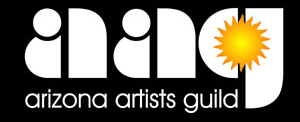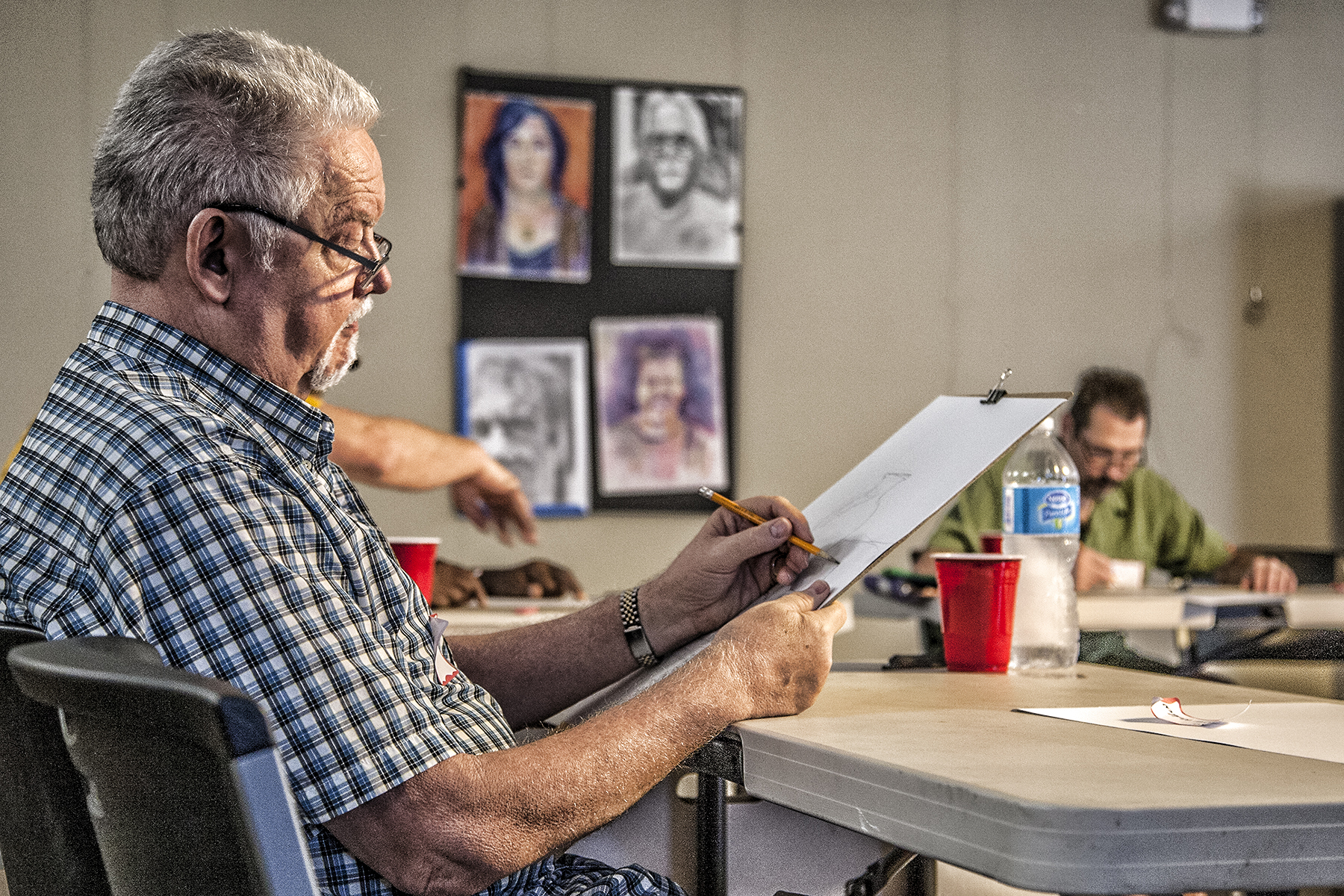Below is a list of typical art instructional sessions, but the actual activity may vary.
1st session
Pre-instruction drawing
Spend 15-30 minutes drawing something that shows how you draw now, so later we can compare to see how much your drawing has progressed.
Overview of drawing, how it is used, types of drawing.
Terms/Vocabulary used:
Line-mark made by a moving instrument such as a pencil, pen, charcoal, marker, brush, etc. that represents the edge of a shape.
Value-term that describes the lightness or darkness in a drawing, painting, print or photograph.
Gesture-a quickly drawn or painted image that captures the basic idea of a subject.
Balance-a concept of the balance of overall attention, or of focal points in a drawing, painting, print or photograph.
Composition-the overall arrangement of shapes, lines, values and colors in a drawing, painting, print or photograph.
Focal point-an area where our attention or interest is directed in a drawing, painting or other 2d image.
Contrast-the amount of difference in an area of a drawing, painting or 2d image. The difference maybe of value, size, shape, texture, line, or color. The more difference equates to more contrast, which equates to more of our attention going to that part of a picture.
Gesture Drawing
Gesture drawing is a beginning plan, capturing the essence of the subject. Work quickly, lightly marking off the most important parts of the subject, be aware of their location on the page in relation to other parts. Spend more time looking at the subject than at your paper.
Once you have the foundation of the drawing established, begin adding definition through line and value. Value is the amount of light or dark a surface appears to have according to the amount of light falling on the surface. Look for the strongest value areas first, putting some shading where the darkest values are seen and be sure to leave blank the areas where the most light is reflected, such as highlight reflections on glass and metal. Everything else will have some amount of shading, even if it appears to be white.
Work over the entire page, try to develop the whole drawing to the same level of development as you go along. Don’t bring one area up to full detailed development while any area of the drawing remains blank, think of it as if you are building a house.
Creating a realistic looking image using pencil is only one way that drawing can look. I use drawing as a way to capture and express a mental picture of something I might make.
A sketchbook is a place for an artist to record an idea.
Contour Drawing
Draw a group of simple objects using a pencil to describe the edges of the shapes. Move the pencil as you move your eye around the form. Draw slowly. Use your pencil held at arm’s length to compare the relative sizes of parts of the subject, then to check if you have the same relationship of those same parts in your drawing.
Keep your eye on the objects more than on your drawing. Its okay if the lines wander, or don’t meet up. The point is to learn to see the objects as compositions of edges rather than our brain’s idea of what the object is. 1 hour
Combine Contour with Gesture
Draw the model with a gestural sketch, when satisfied, add contours. Vary the line darkness and thickness in order to suggest the 3D aspect of the form. A line that is the same thickness all around suggests a form that is flat, while a line that changes in thickness and darkness suggests a 3D form. 1 hour
Assignment: Choose a drawing by a master artist from the drawing texts provided and make as exact a copy as you can. The purpose is to learn how an artist views a subject, and uses art to express the idea of the subject. Pay close attention to the slight variations of line, value and contrast. These are the keys to a successful drawing.
Rembrandt
Leonardo Da Vinci
Albrecht Durer
Peter Paul Rubens
Nikolai Fechin
Jean Auguste Dominique Ingres
Edgar Degas
Spend time daily practicing the drawing techniques in your sketchbook daily. Daily practice is crucial in determining success in drawing. Don’t worry about making a “perfect” drawing, concentrate on translating what you see into the language of drawing–lines, and shading.
2nd Session
Gesture Drawing-review
Gesture drawing is a beginning plan, capturing the essence of the subject. Work quickly, lightly marking off the most important parts of the subject, be aware of their location on the page in relation to other parts. Spend more time looking at the subject than at your paper.
Combine Contour with Gesture
Draw the model with a gestural sketch, when satisfied, add contours. Vary the line darkness and thickness in order to suggest the 3D aspect of the form. A line that is the same thickness all around suggests a form that is flat, while a line that changes in thickness and darkness suggests a 3D form.
Value
Draw a group of objects with a very light contour line. Just mark the shapes of the objects for reference. Hold the pencil with the lead flat on the paper and add shading to the darker areas of the subject. Remember the reflections and highlights on the surface will have to be represented by the white of the paper so all the rest of the subject will have some shading or more, depending on how much light is falling on the subject. 1 hour
Value drawing on Toned Paper-Larry Carter
Use charcoal, white chalk and an eraser to draw.
Assignment: Spend one hour each day drawing objects, people, and spaces using gesture, contour lines and value.
3rd Session
Perspective
Linear and atmospheric perspective drawing.
Draw boxes to understand linear perspective, including the use of horizon line, vanishing points.
Draw a group of objects using atmospheric perspective to create a sense of deep space in a drawing.
Find a photograph that illustrates a scene with a feeling of deep space such as a landscape image, or looking down a street, or across a large room, etc. Glue this picture onto a larger sheet of white drawing paper. Make sure the drawing paper is at least double the size of the photograph to allow plenty of room for drawing around the picture.
Extend the image in the photograph onto the white paper by drawing lines outwards. You may have to cut the picture down so it is just a fragment of the scene so you have something to work with to extend the picture.
Value with a Pen
Draw a group of objects with a light pencil line just for reference (gesture). Then, using a pen, add value by making lines called Hatching. The amount of paper between the ink lines will suggest a Value area that is darker or lighter than another area of Hatching.
4th Session
Digital Photography-Mark Woehrle
Learn how to use a camera like an artist. A camera can be used to capture images to later make drawings and paintings from.
Color with Chalk Pastel-David Bradley
Add color to charcoal drawings with chalk pastels.
Make a color wheel using only red, yellow and blue.
5th Session
Digital Photography continued-Mark Woehrle
Collage/Mixed Media Art-Art Smith
6th Session
Figure Drawing
Draw the model as he or she moves around the room. Spend 5 to 10 seconds capturing the whole form. Don’t concentrate on one part of the body, Move your pencil from one end to the other. 1 hour
Poured Painting-Harold Raap
Create colorful abstract compositions using liquid paint poured onto Yupo.


Follow Us